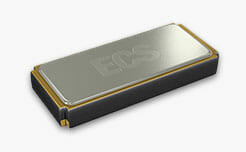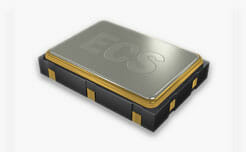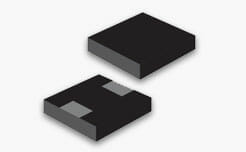
In this Quartz Resonators series video, we answer the question “What is Resonant Frequency?”
Resonant frequency is the oscillation of a system at its natural or unforced resonance. Resonance occurs when a system is able to store and easily transfer energy between different storage modes, such as Kinetic energy or Potential energy as you would find with a simple pendulum. Most systems have one resonant frequency and multiple harmonic frequencies that get progressively lower in amplitude as they move away from the center.
In the case of a quartz resonators, the Resonant Frequency is the desired frequency of oscillation that you want to achieve.
There are two methods of using Resonant Frequencies to derive a clock. Crystals operating at or below 50 MHz are referred to as resonating at their fundamental or natural frequency. Shown in the graph here in red, when producing clocks that need to generate frequencies above 50 MHz you are taking advantage of harmonic frequencies. Harmonics are multiples of the fundamental frequency.
Shown in the graph as 2nd, 3rd, 4th and 5th harmonic. As an example, a third harmonic would be three times the original frequency. In this case, the fundamental frequency of 110 hz x 3 = 330 hz. You can isolate and amplify the harmonics to give you a higher cleaner frequency than you would if you multiplied the original frequency. This opens up the available frequency spectrum to quartz based resonators.
Watch the above video to learn more about Resonant Frequency then click on the button below to start searching for the exact part you need!

Crystals

Oscillators

Power Inductors

ECSpressCON
Please contact us if you need additional information or have a specific requirement in your application.
ECS, Inc. International
15351 West 109th Street
Lenexa, KS 66219
Tel: 913-782-7787
Toll Free: 1-800-237-1041
Fax: 913-782-6991
What is Resonant Frequency? was last modified: April 10th, 2024 by